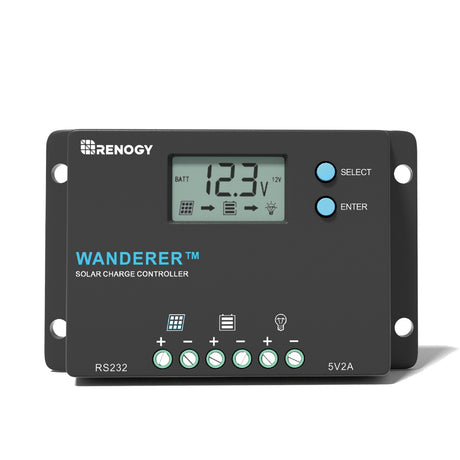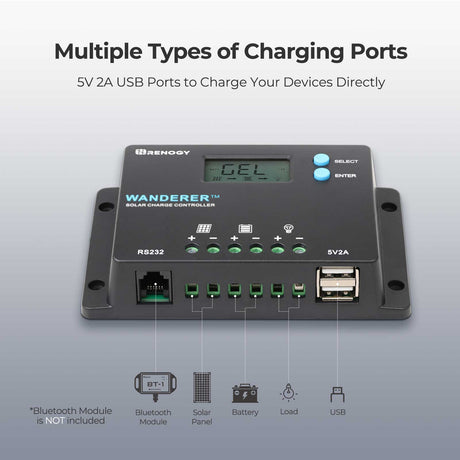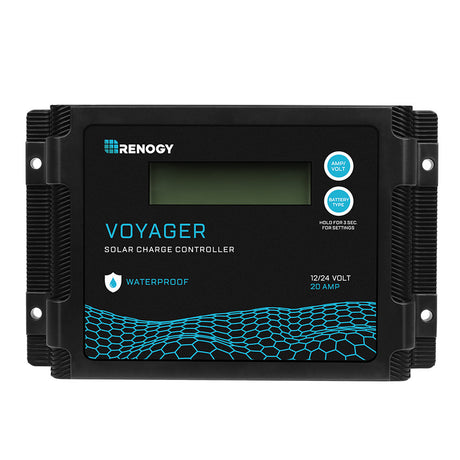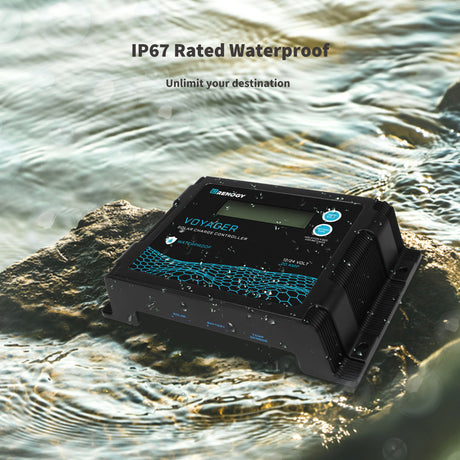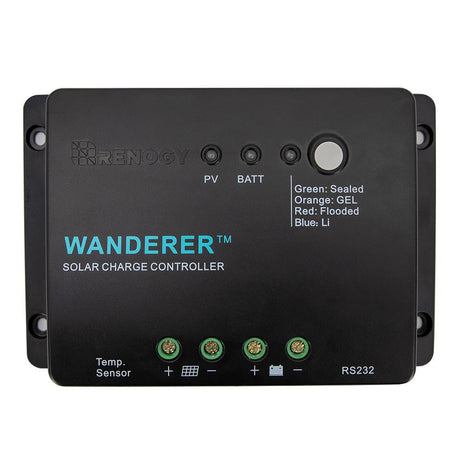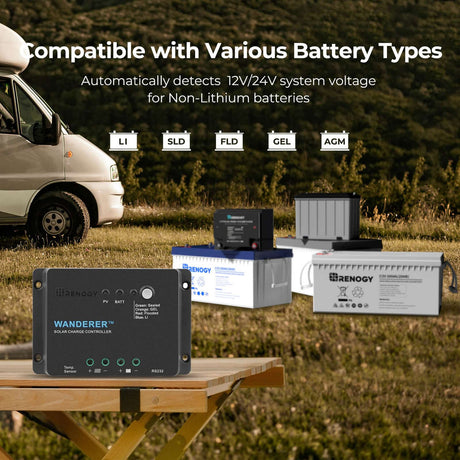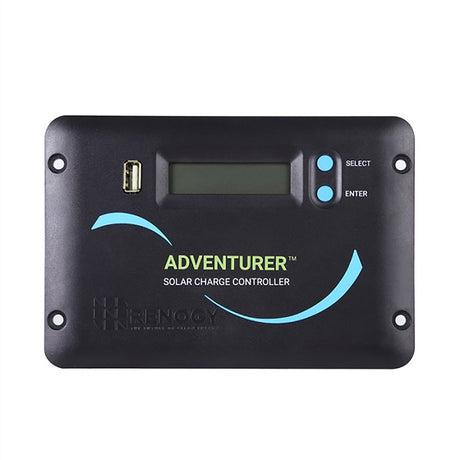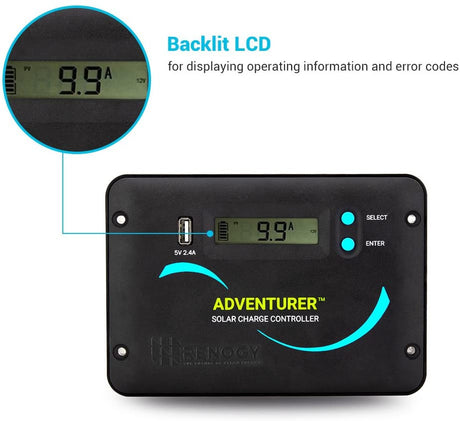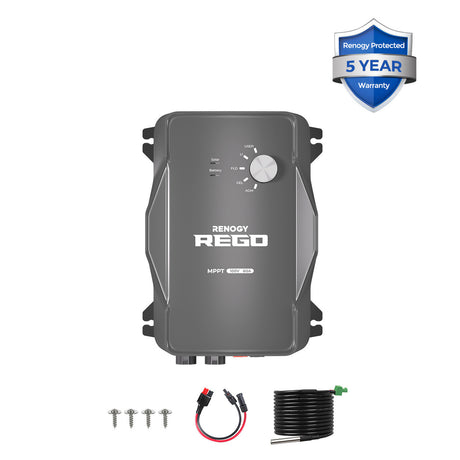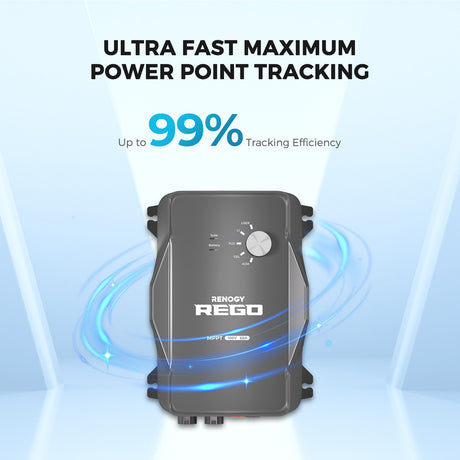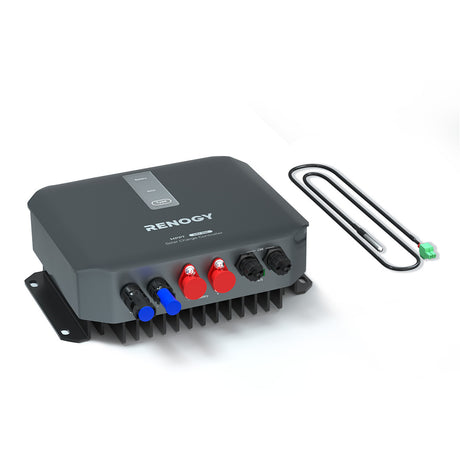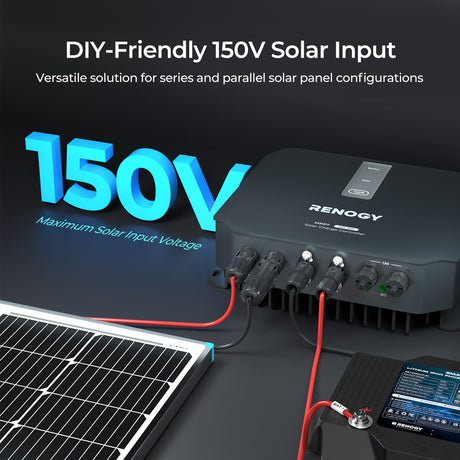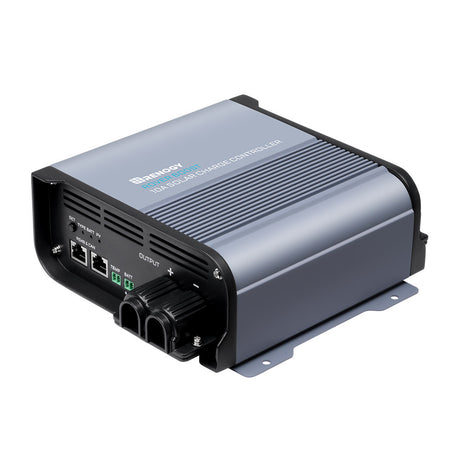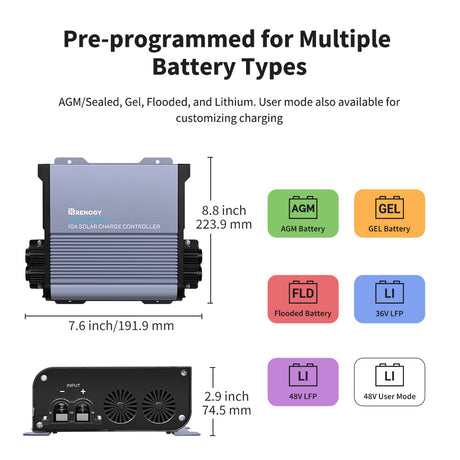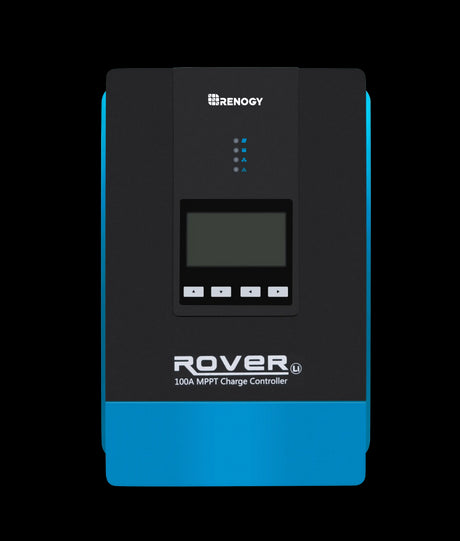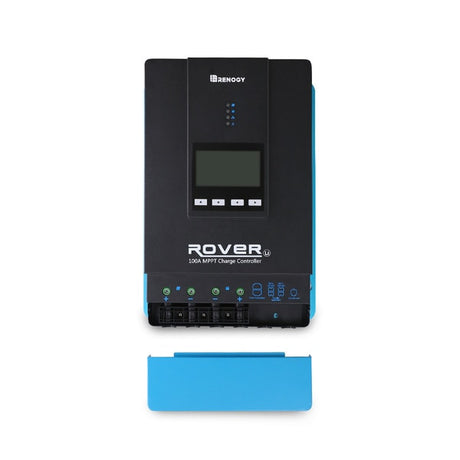- Hot
Renogy
Rover Li 12V 20/30/40A MPPT contrôleur de Charge solaire
99% tracking efficiencyAuto-detects 12/24V systemDe C$119.99C$159.99Prix unitaire /Indisponible Renogy
Contrôleur de charge solaire MPPT Rover Lite 12 V/24 V/36 V/48 V 60 A
99% tracking efficiency150V max solar inputDe C$259.99C$309.99Prix unitaire /IndisponibleRenogy
Contrôleur de charge solaire MPPT Renogy Rover 60 A 12 V/24 V/36 V/48 V
99% tracking efficiencyAuto-detects 12-48V systemDe C$329.99C$389.99Prix unitaire /IndisponibleRenogy
Contrôleur de charge Wanderer 10A PWM 12V/24V avec module Bluetooth
De C$45.99C$49.99Prix unitaire /IndisponibleRenogy
Contrôleur de charge solaire étanche Voyager 20 A PWM 12 V/24 V
De C$59.99C$69.99Prix unitaire /IndisponibleRenogy
Contrôleur de charge encastré Adventurer Li 30 A PWM avec écran LCD 12 V/24 V
De C$59.99C$79.99Prix unitaire /IndisponibleRenogy
Contrôleur de charge solaire MPPT REGO 12 V 60 A avec bornes Anderson
De C$469.99Prix unitaire /IndisponibleRenogy CA
Contrôleur de charge solaire MPPT RENOGY REGO 12 V/24 V/36 V/48 V 30 A
C$399.99Prix unitaire /IndisponibleRenogy
Contrôleur de charge solaire MPPT Rover Boost 10 A 36 V/48 V
C$79.99C$109.99Prix unitaire /Indisponible- Épuisé
Renogy
Contrôleur de charge solaire MPPT Rover 100 A 12 V/24 V/36 V/48 V
De C$799.99Prix unitaire /Indisponible
Frequently Asked Questions
What does a charge controller do?
What does a charge controller do?
A charge controller is the "brain" of your solar power system. Its main job is to regulate the flow of electricity from your solar panels to your batteries. Without it, your panels could overcharge your batteries, which leads to permanent damage, a shorter lifespan, and in some cases, a safety risk. By managing the voltage and current, a charge controller ensures your batteries are charged safely and efficiently, protecting your investment.
What are the two types of charge controllers?
What are the two types of charge controllers?
The two main types are PWM (Pulse Width Modulation) and MPPT (Maximum Power Point Tracking). PWM controllers are a cost-effective choice for smaller systems. MPPT controllers are more efficient, especially in Canada's cooler climate, as they can extract up to 30% more power, making them ideal for larger systems.
What does a charge controller do when the battery is full?
What does a charge controller do when the battery is full?
Once your battery reaches a full state of charge, the charge controller's job is to prevent overcharging. It does this by automatically reducing the charging current to a trickle or "float" charge. This low-level maintenance charge keeps the battery topped up without causing any damage, much like a smart phone charger that stops charging once the battery hits 100%.
How big of a charge controller do I need?
How big of a charge controller do I need?
To size your charge controller, use this simple formula: divide your total solar panel wattage by your battery bank's voltage. For example, a 400W system with a 12V battery needs at least a 34A controller (400W/12V=33.3A). Always add a 25% safety margin.
What size charge controller do I need for a 400 watt solar panel?
What size charge controller do I need for a 400 watt solar panel?
The size depends on your battery bank’s voltage. For a 12V system, a 40A controller is a safe choice, providing a margin of error. For a 24V system, a 20A controller is sufficient, as the current needed is lower. Always confirm compatibility with your panel's specifications.
How many watts can a 20 amp charge controller handle?
How many watts can a 20 amp charge controller handle?
The wattage a charge controller can handle is determined by your battery voltage. A 20A controller can manage:
- Up to 240W on a 12V system (20A×12V)
- Up to 480W on a 24V system (20A×24V)
- Up to 960W on a 48V system (20A×48V)
How many watts can a 60 amp charge controller handle on a 12V system?
How many watts can a 60 amp charge controller handle on a 12V system?
A 60-amp charge controller on a 12V battery system can handle a maximum of approximately 720 watts of solar panels (60A×12V=720W). It’s a great choice for larger RV or cabin systems.
What happens if my solar controller is too big?
What happens if my solar controller is too big?
If your charge controller is oversized, it's generally not a problem and won't harm your system. It simply means you've purchased a unit with more capacity than you currently need. While it might be an unnecessary expense upfront, it does provide room to expand your solar array in the future without having to upgrade your controller. The controller will simply limit the current to what your battery can safely handle.
Can I use multiple charge controllers in one system?
Can I use multiple charge controllers in one system?
Yes, you absolutely can. Using multiple charge controllers is a common practice, especially for larger solar systems or when you have panels with different power ratings or orientations. To do this, simply connect each charge controller to a separate set of solar panels and then wire all the controllers to the same battery bank. Using charge controllers of the same models and specifications is a good way to make sure that the power generation data is correct and that the system works with them.
How far can my solar panels be from my charge controller?
How far can my solar panels be from my charge controller?
The distance should be minimized to reduce voltage drop, which is power loss as electricity travels through a wire. To offset this, use thicker gauge wires for longer distances. Wiring your panels in series to increase voltage is another effective strategy for longer cable runs.


